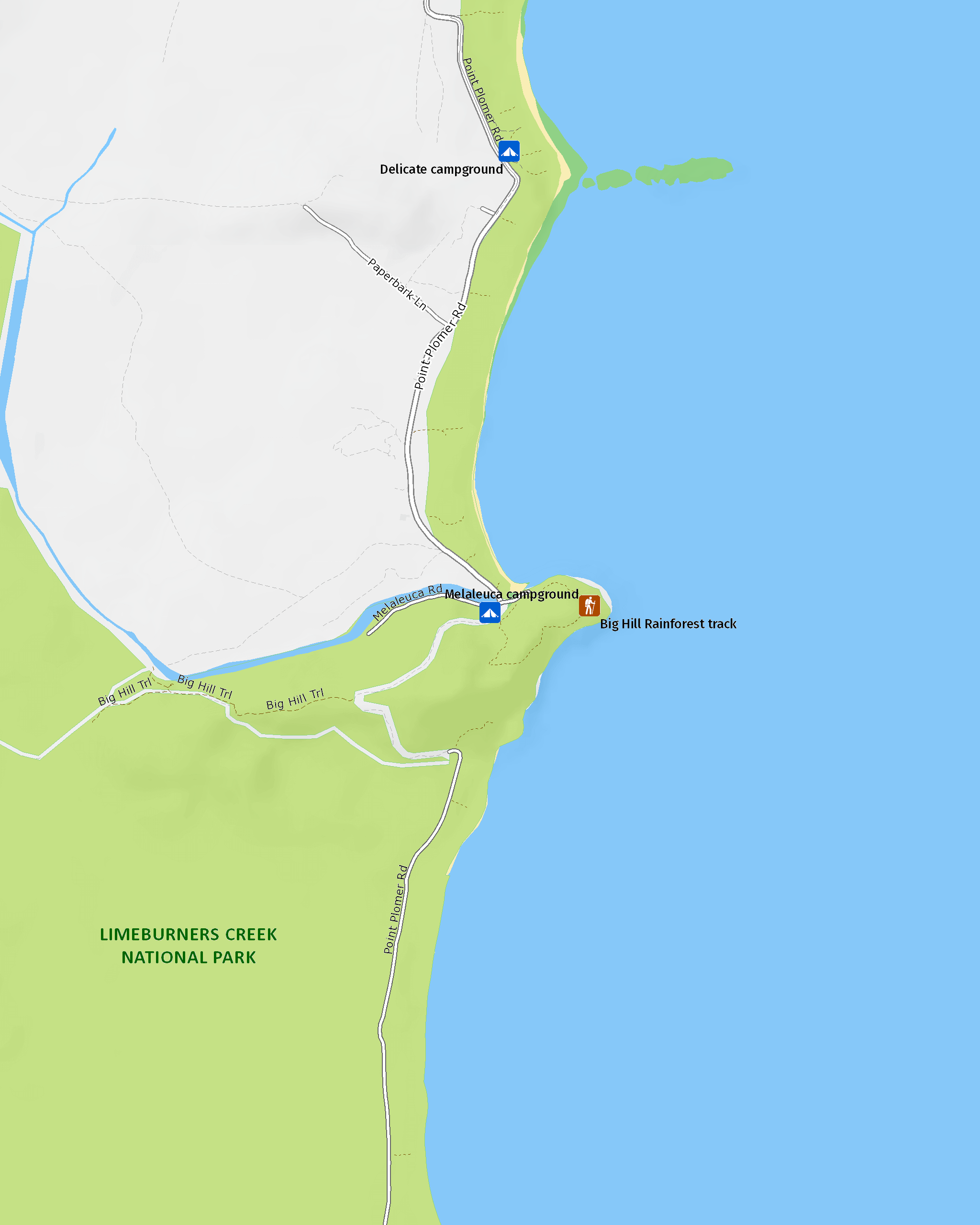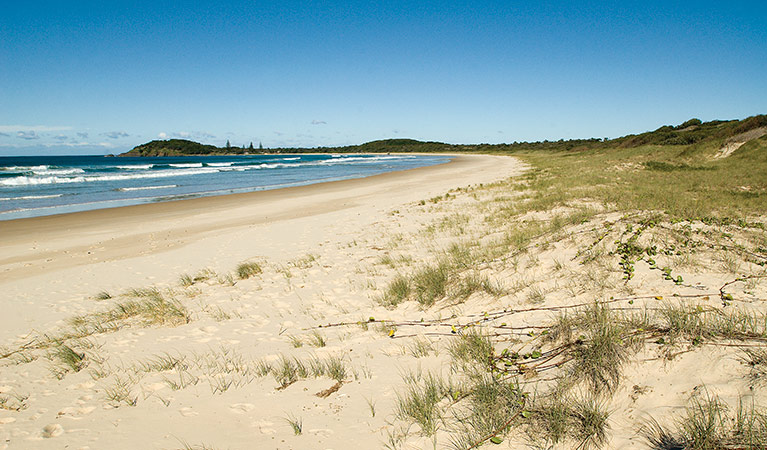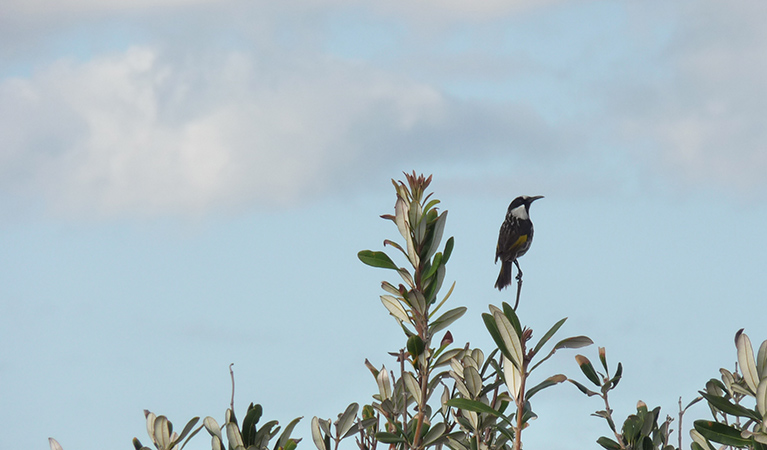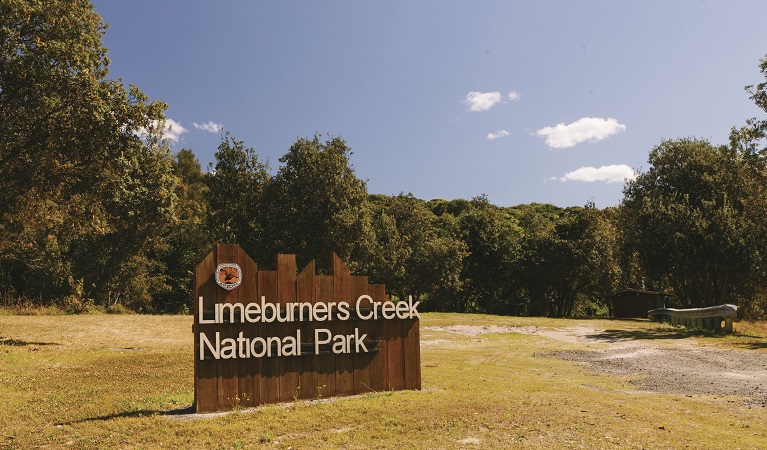Melaleuca campground
Limeburners Creek National Park
Overview
Melaleuca campground is Limeburners Creek’s best-kept secret. It provides a peaceful sanctuary for walking, surfing, swimming, and relaxing coastal camping.
| Number of campsites | 50 |
|---|---|
| Camping type | Tent, Camper trailer site, Caravan site, Camping beside my vehicle |
| Facilities | Carpark, toilets |
| What to bring | Drinking water, cooking water, fuel stove |
| Entry fees |
Park entry fees apply and can be purchased at the time of booking. |
| Group bookings | Book up to 20 people or 5 sites online. For larger groups, make a group booking enquiry. |
| Please note |
|
Melaleuca campground is Limeburners Creek’s best-kept secret. Located alongside a privately owned waterway, this picturesque coastal campground is tucked away from the strong coastal winds and offers a place of peaceful solitude for those looking to get away from it all.
Once you’re there, you’ll have the place to yourself. Your only visitors might be a goanna or a dingo scavenging for food, so keep things well-secured.
Find a grassy campsite to pitch your tent or park your caravan looking out across the tranquil waters, with the lush rainforest behind you.
Unwind in the tranquillity of this peaceful setting or head off to explore the rare coastal rainforest on Big Hill Rainforest walking track. There’s also great surfing, swimming and snorkelling at the nearby beaches.
Also see
-

Delicate campground
Delicate campground, in Goolawah Regional Park near Crescent Head, offers beach camping and caravan camping and welcomes those camping with dogs. It’s the ideal Kempsey region camping spot.
-

Point Plomer campground
Point Plomer campground is ideal for a family holiday, or a relaxing weekend getaway. Golden beaches, lush rainforest, world class surfing, swimming, and fishing await you.
-

Plomer Beach House
Located just moments from the beach near swimming and fishing spots, Plomer Beach House is the perfect accommodation for family holidays or remote surf and beach getaways.
Map

Map legend

Local alerts
For the latest updates on fires, closures and other alerts in this area, see https://uat.nswparks.cloud/camping-and-accommodation/campgrounds/melaleuca-campground/local-alerts
Bookings
- National Parks Contact Centre
- 7am to 7pm daily
- 1300 072 757 (13000 PARKS) for the cost of a local call within Australia excluding mobiles
- parks.info@environment.nsw.gov.au
Operated by
- Kempsey office
- Monday to Friday, 9am to 4.30pm.
- 02 6561 6700
- npws.hastingsmacleay@environment.nsw.gov.au
- 247 Old Station Rd, Verges Creek NSW 2440
Park info
- in Limeburners Creek National Park in the North Coast region
Limeburners Creek National Park is always open but may have to close at times due to poor weather or fire danger
-
$8 per vehicle per day.
Buy annual pass.
Visitor info
All the practical information you need to know about Melaleuca campground.
Maps and downloads
Learn more
Melaleuca campground is in Limeburners Creek National Park. Here are just some of the reasons why this park is special:
A place of historic heritage

Back in the early days of the Port Macquarie penal settlement, lime for building mortar was in great demand. They used to collect and burn enormous quantities of oyster shells from this area, giving the park its unusual name. Many of the landmarks in the park were named after some of the more colourful pioneers of the past. Barries Bay was originally a whaling station, named after the Barrie family who lived there for many years. Big Hill was named after Kevin Hill, reputedly a hermit who lived on the northwest side of the hill during the Great Depression of the 1930s.
Strong Aboriginal cultural connections

The Dunghutti People from Kempsey and the Biripai people from Port Macquarie continue to have a strong connection with the area surrounding Limeburners Creek. Point Plomer and Big Hill in particular are Aboriginal sites of outstanding significance. Several sites and artefacts tracing Aboriginal settlement in this region back to at least 6,000 years have been found, including burial sites, shell middens, a quarry for stone tool production and axe grinding grooves in rock outcrops around Point Plomer.
Wildlife and bird watching haven

Limeburners Creek National Park is a hot spot for animals. Spotted tail quoll, dingos, butterflies, micro bats, giant pythons and even brolgas make their home here. Birdwatchers will also be in heaven. You'll see rare pied oystercatchers and little terns along beaches, osprey and other large birds of prey circling above and migratory seabirds on their journey north. You might also see the rare ground parrot out in the grass and heathlands.
- Big Hill Rainforest walking track Discover lush rainforest, rocky headlands, spectacular views and abundant wildlife along Big Hill Rainforest walking track.
- Multi-day pack free hike on NSW Mid-North Coast Journey through untouched, coastal landscapes on this 3-day, pack-free walk with Positive Energy Adventures and Retreats. You’ll walk 34km across the beautiful Limeburner’s National Park and Goolawah National Park.
Plants and animals protected in this park
Animals
-

Eastern ground parrot (Pezoporus wallicus wallicus)
The eastern ground parrot is a beautiful, ground-dwelling native bird that lives in low heathland habitat along the NSW North and South coasts and escarpments. It’s listed as a vulnerable species in NSW.

